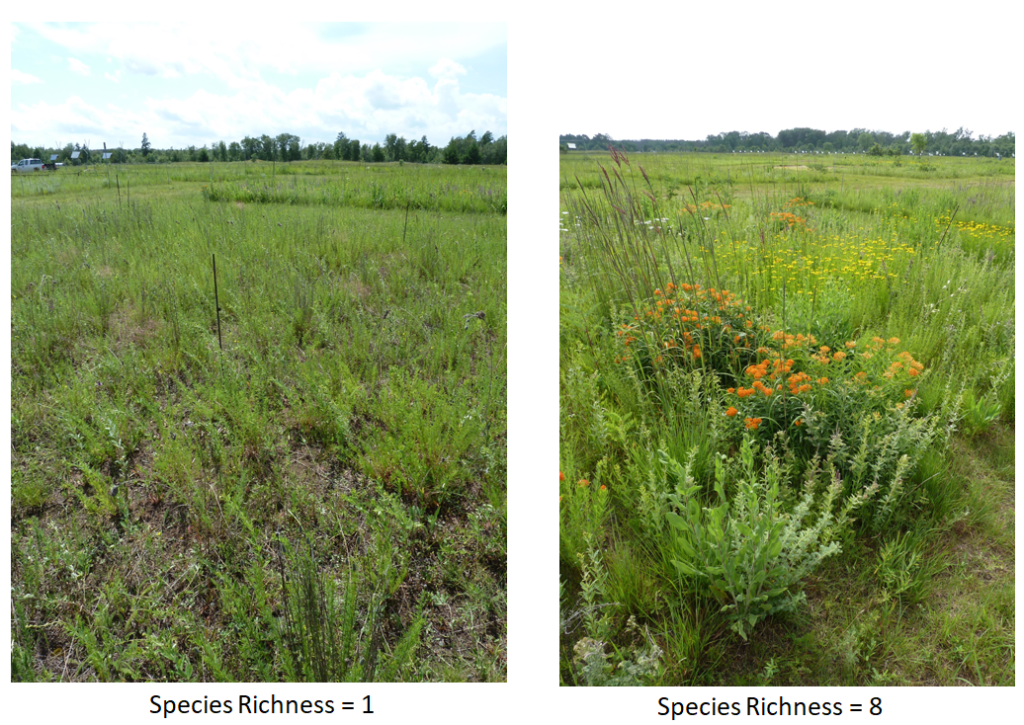Projects
Linking remotely sensed optical diversity to genetic, phylogenetic and functional diversity to predict ecosystem processes

Collaborative partner (NASA & NSF Collaborative Research)
Proposal abstract:
Monitoring biodiversity and understanding its consequences for ecosystem and global processes are critical challenges in the face of rapid global change. However, the constraints on measuring biodiversity imposed by limited research funding requires developing less expensive methods that can be used comprehensively to characterize that heterogeneity in space and time. Remote sensing offers promise in this regard, because plants partition key resources in time and space as a result of contrasting ecophysiological strategies, giving rise to structural, chemical, metabolic and phenological differences that affect optical properties of leaves. Thus, plants display themselves towards the sky in contrasting ways that are detectable by optical sampling, allowing remote sensing to assess diversity. The diversity of plant ecological strategies also has consequences for other trophic levels, including soil microbial diversity and function. Here we propose to link remotely sensed optical diversity to plant functional, phylogenetic and genetic diversity aboveground, and to net primary production (NPP), and soil properties and microbial processes belowground, as a basis for predicting ecosystem processes with remote sensing.
While broad geographic biodiversity patterns such as the latitudinal gradient in species richness are well characterized, quantifying biodiversity at large temporal and spatial scales remains daunting. Earth is simply too large to comprehensively sample biodiversity by traditional means. Remote sensing metrics of biodiversity that are linked to taxonomic, functional and genetic would be invaluable in understanding extant and changing patterns of biodiversity and their consequences for ecosystem processes.
Functional variation in space (e.g. with site conditions) and in time (e.g., in response to disturbance) affects species composition, plant structure, biochemistry, physiology, and phenology, all of which influence the way plants absorb and reflect radiation and thus drive optical properties. Variation in optical properties also results from underlying genetics and evolved trade-offs associated with biological properties that drive variation in belowground processes. For example, functional composition and diversity at the leaf and canopy level determine litter chemistry and diversity, potentially affecting soil microbial community composition and function. Divergence in microbial communities potentially leads to contrasting ecosystem level processes, such as decomposition and nutrient cycling. These feedbacks ultimately influence future ecosystem development, affecting primary production, species composition, and carbon storage.
We propose that optical diversity at both the leaf and canopy level reflects phylogenetic, genotypic and functional diversity of ecosystems and thus predicts critical ecosystem properties. Our short-term goal is to apply novel methods to test hypotheses linking functional, phylogenetic and genotypic diversity in above and belowground components of ecosystems. The central hypothesis is that (1) biodiversity (genotypic, functional and phylogenetic diversity) at one trophic level (plants) drives functional and genetic diversity in other trophic levels (soil microbes) with further consequences for ecosystem function and (2) that such diversity can be detected remotely at multiple scales of spatial resolution. This study will provide critical experimental evidence for the concept of surrogacy, i.e., that one metric of biodiversity can be used to provide information about others. While relationships between optical diversity and plant diversity have been demonstrated for some ecosystems (tropical, Mediterranean, and boreal), how well the relationships hold across other terrestrial ecosystems, different spatial scales, and different biological scales of diversity (genetic, phylogenetic and functional) is unknown. Nor do we understand how well optical diversity can predict ecosystem processes. Our long-term goal is to develop theory and operational methods to monitor biodiversity at several levels (optical to genetic) as a means to predict ecosystem functions critical to understanding and monitoring global scale processes and change.Specifically, we pose the following hypotheses and objectives:
- Hypothesis 1: Functional and/or genotypic, taxonomic, and phylogenetic diversity of plant communities can be detected optically (i.e., via remote sensing) due to variation in structural, phenological, biochemical and physiological properties of leaves, canopies and communities.
- Objective 1.1: Measure structural, phenological, biochemical, and physiological properties of individual plants, genotypes, species and communities to determine mechanistic causes of seasonal and interannual variation in spectral signatures contributing to optical diversity.
- Objective 1.2: Across multiple spatial scales and decreasing levels of resolution, test the ability of optical techniques to measure functional, genotypic, and phylogenetic diversity in (1) experimentally manipulated and (2) naturally occurring prairie and forest communities.
- Hypothesis 2: The diversity and types of structural, chemical and physiological properties of leaves influence belowground ecosystem processes (litter and soil decomposition and nutrient cycling) and drive genetic and functional diversity of microbial communities. Surrogacy suggests that microbially driven ecosystem processes caused by plant-soil linkages can be detected optically.
- Objective 2.1: Determine linkages of the diversity and types of functional attributes of leaves, individual plants and communities to litter and soil organic matter decomposition rates and nutrient cycling.
- Objective 2.2: Determine linkages of the diversity and characteristics of leaf properties, leaf litter, and decomposition and nutrient cycling rates to microbial community genetic and functional diversity and composition.